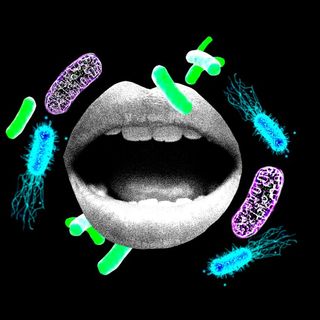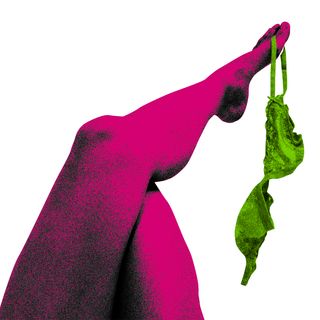
Why People May Be More Creative During Certain Phases of Menstrual Cycles
Researchers found that people had their most original ideas during the ovulation phase of their monthly cycles.

Ovulation — the period where a mature egg is released from the ovary — impacts individual demeanor in several ways. One study suggests people’s breasts may feel more tender; some research indicates people are more open to sexual adventures during the time; a few other deep-dives note that people develop a more competitive attitude for a few days, and may also experience an alteration in their clothing and food preferences.
A new study adds to this body of research, suggesting that ovulation might boost people’s creativity too.
Published in Frontiers In Psychology, the study found that women had their most novel, creative ideas while they were ovulating. The 72 participants — between the ages of 18 and 35 — involved in the study, were neither pregnant nor breastfeeding; they weren’t on any hormonal contraceptive either. While the dataset, in this case, is rather limited, the research points to a largely unexplored link between our reproductive system and our creative cognition.
First, the researchers determined the menstrual cycle phases of the participants using saliva-and-urine-based test kits. Then, they assessed their creativity through different tests during each of the phases, and had their ideas rated by trained, independent professionals. The results suggested that the ideas generated by the participants during their ovulatory phase were the most original and creative.
The researchers believe the link between ovulation and creativity may lie in our evolutionary underpinnings. “[Creativity] could be linked to reproduction, helping to attract mates… As we can see, love can be really inspiring for artists,” noted Katarzyna Galasinska from the institute of psychology at the SWPS University of Social Sciences and Humanities in Poland, who co-authored the present study. “[I]t is hard to prove that creativity evolved through sexual selection, as a sort of signal attracting mates’ attention. It surely found a lot of different applications across time. But if we assume such an explanation, we can look for evidence hypothesizing ‘what if.'”
Related on The Swaddle:
Lockdown Stress Is Disrupting Menstrual Cycles
Another study, published last year in the International Journal of Environmental Research and Public Health, stated, “The higher the probability of conception was, the more original ideas were generated… These ideas were also more varied and included more frequent changes in perspective…” The findings were based on the menstrual cycles of more than 750 women whose creativity was assessed through a task designed to measure the originality, fluency, and flexibility of their ideas.
While evolution may be the larger reason for ovulation-inspired creativity, certain neural mechanisms — triggered by the hormones — probably facilitate it. “Sexual hormones are a kind of mood enhancer [and] a positive mood affects the flexibility of thinking. Also, women feel more courageous and powerful, so they sometimes engage in risky situations during the phase near ovulation. To be creative, we have to take a risk a little bit, as creativity requires breaking through patterns and mental blocks,” explained Galasinska, who had co-authored the 2021 study, too.
Besides creativity serving as a “signal” for mates, Galasinska believes it may also be associated with “intrasexual competition,” or a tussle between members of the same sex — and sexuality — for the best mate. “We need many more studies to indicate that creativity may be an adaptation to mating… It should be tested in many contexts associated with increased mating motivation, such as attraction to a partner or rivalry for a partner, both in women and men.”
Even as the reason why ovulation and original ideas are interlinked still remains largely unknown, acknowledging the link between the two might just help people plan their lives better. As Galasinska notes, “Maybe monitoring the ovulatory cycle can help women understand their mentality and [also] resonate with it.” So, perhaps, one can, then, schedule their brainstorming sessions accordingly, or even time their art classes to coincide with the ovulation phases of their monthly cycles.
Devrupa Rakshit is an Associate Editor at The Swaddle. She is a lawyer by education, a poet by accident, a painter by shaukh, and autistic by birth. You can find her on Instagram @devruparakshit.
Related


Many Indian Women Have More Sexual Partners Than Men, Govt Data Shows
